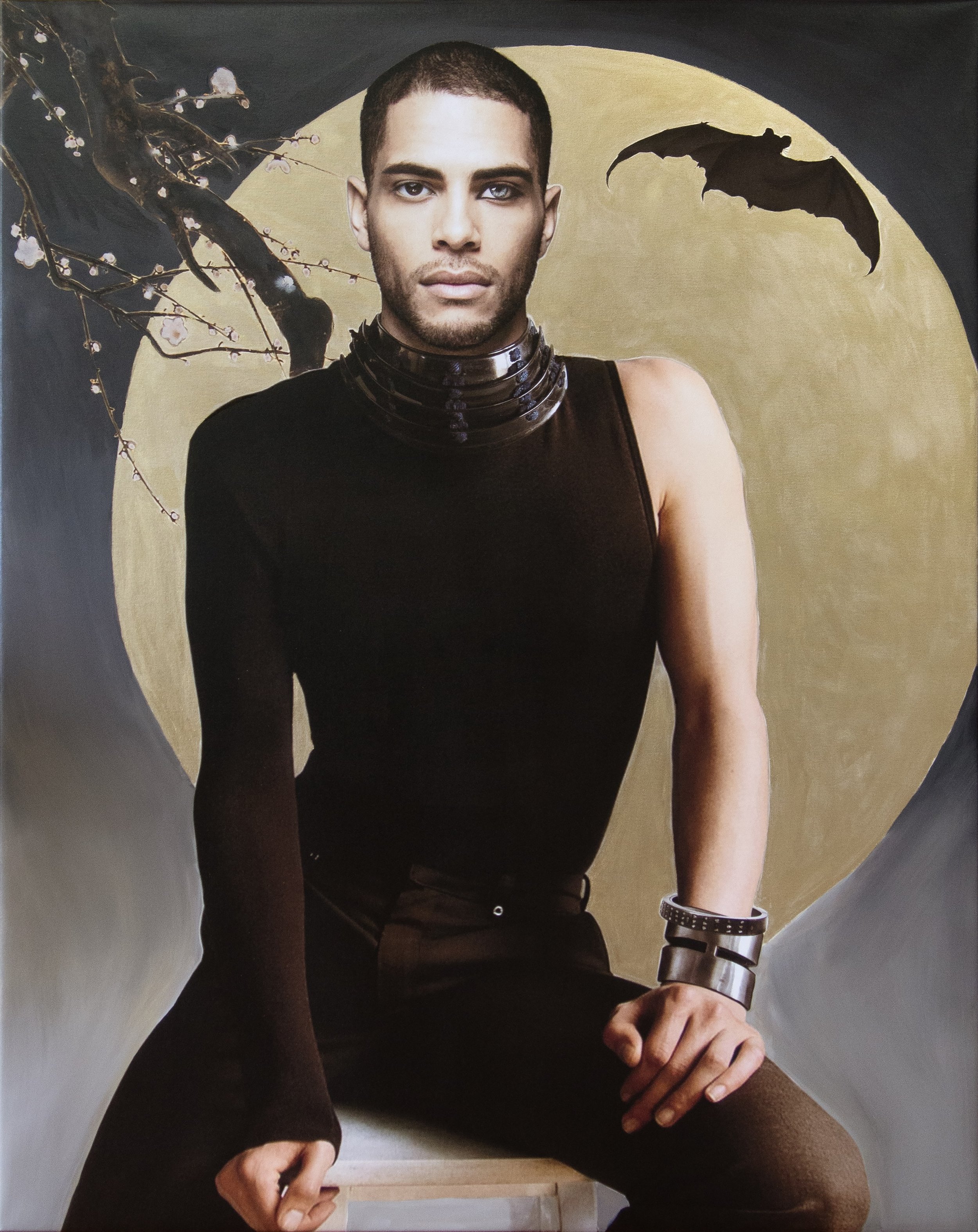
Photography and acrylic on canvas
I 125 x 155cm I (framed)
$5000
In 1579, an African man now known by the name of Yasuke arrived in Japan. He served the daimyo Oda Nobunaga during the Sengoku period and was the first known foreigner to achieve Samurai status.
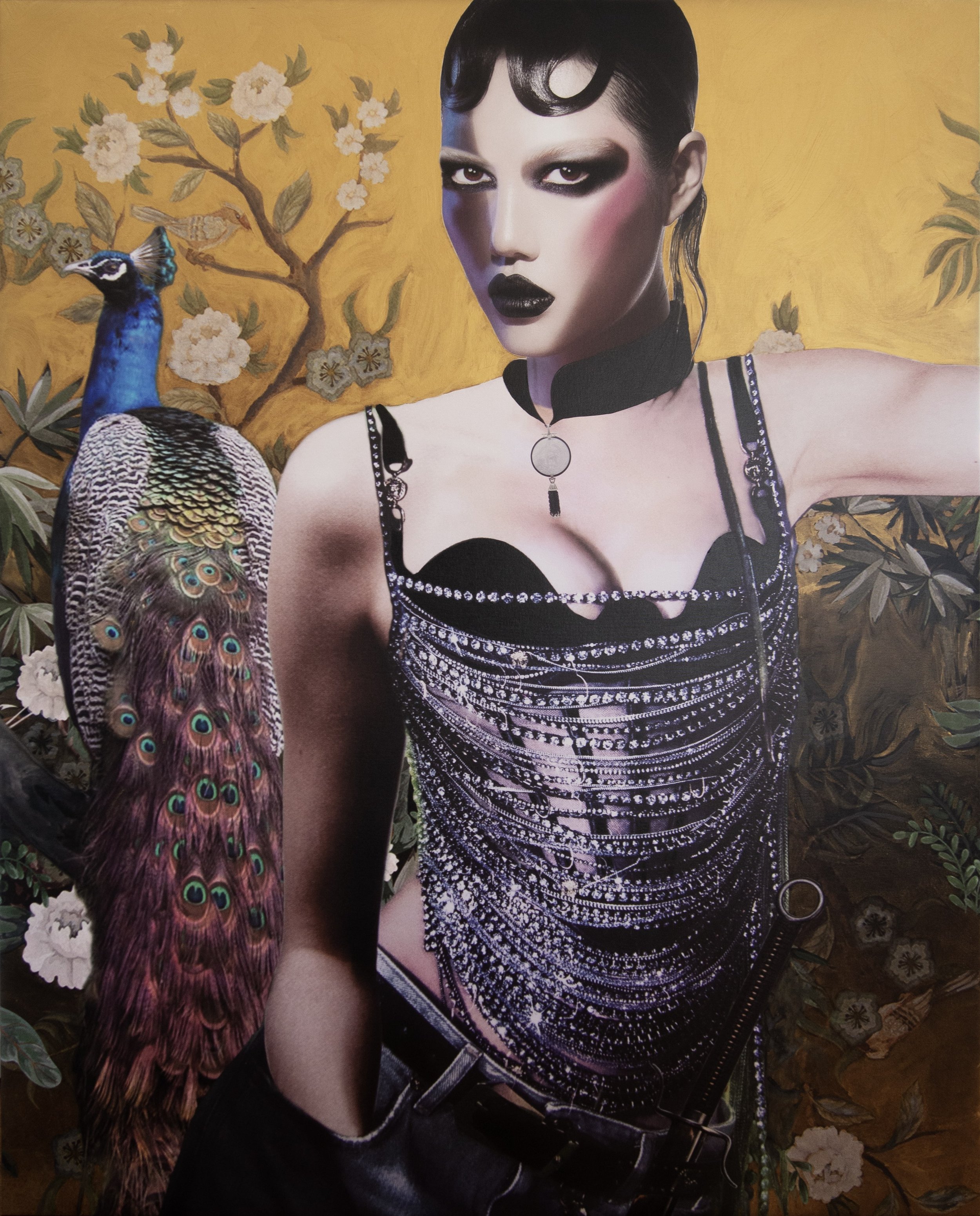
Photography and acrylic on canvas
I 125 x 155cm I (framed)
$5000
Xun Guan (303–?) was an ancient Chinese female warrior that lived during the Jin dynasty and who famously led a group of soldiers into battle at the age of thirteen. As daughter of the governor of Xiangyang and a highly skilled martial artist, Xun is said to have broken through enemy lines to assemble reinforcements and prevent the city of Xiangyang from being invaded.
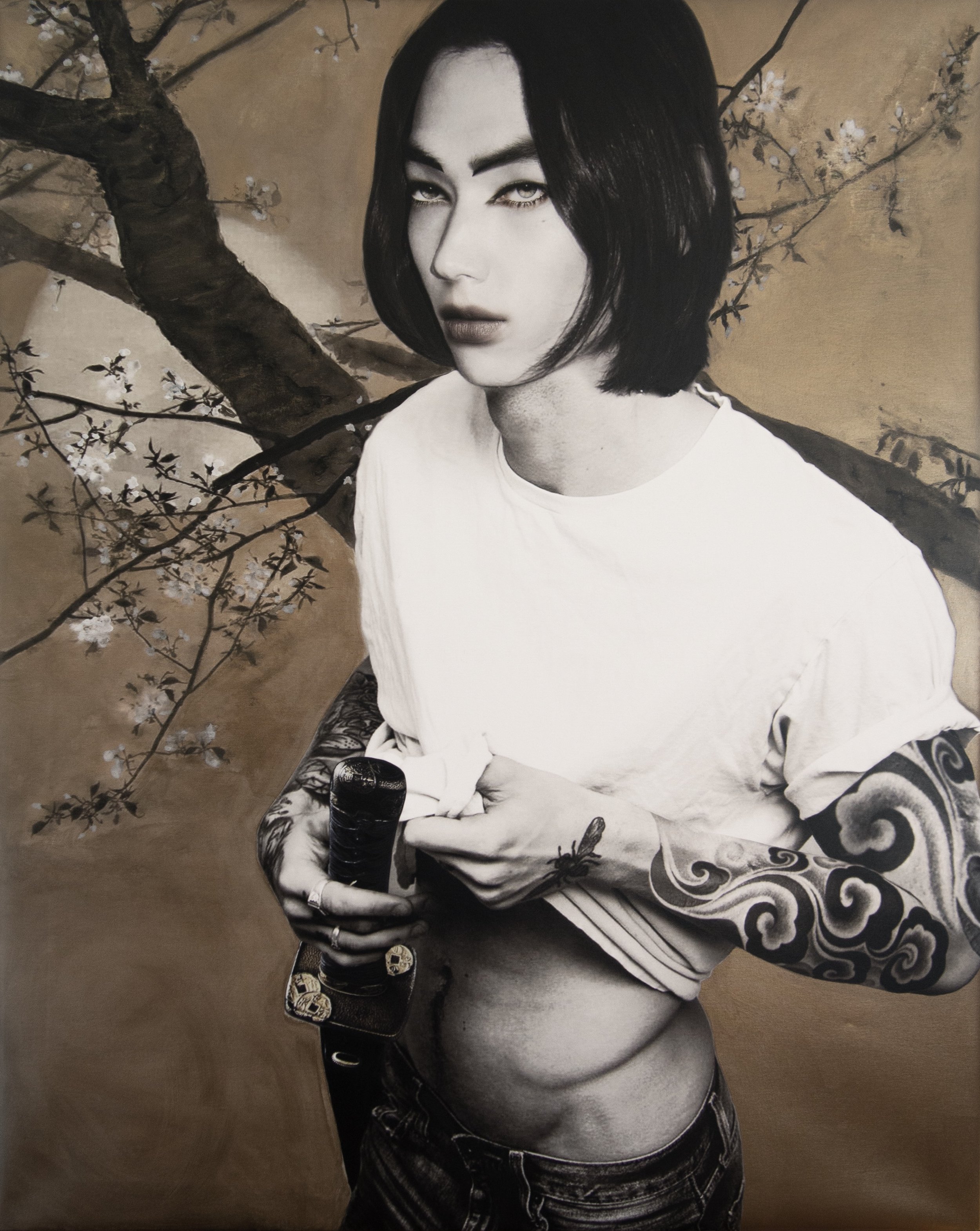
Photography and acrylic on canvas
I 125 x 155cm I (framed)
$5000
In ancient Japan, a Kensei was an honorary title given to a warrior of legendary skills in swordsmanship. The literal translation of kensei is "sword saint". The term is considered by some to imply a higher degree of perfection and possibly also encompass a higher moral dimension.

Photography and acrylic on canvas
I 125 x 155cm I (framed)
Taught by her father, a Shaolin master, Fang Chi Liang was devastated by his death when he was attacked and swore revenge. She realised, however, that her Kung Fu skills were not up to the task given her small stature. While pondering this problem, it is said that she was disturbed by a large crane that screeched and landed close to her. Fang tried to beat it away using a long pole, but the crane fended off her attacks easily by using its agility .
Amazed by the crane's grace and relaxed speed, Fang began to formulate a Kung Fu style known as White Crane based on its use of evasion and counter attack. After intense training Fang Chi Liang was able to avenge her father's death.

Photography and acrylic on canvas
| 124 x 155cm | (framed) SOLD
Kaihime or Lady Kai was a Japanese Onna-musha from the Sengoku period. She is known as the beautiful and heroic woman who helped her father’s resistance at the Oshi castle.
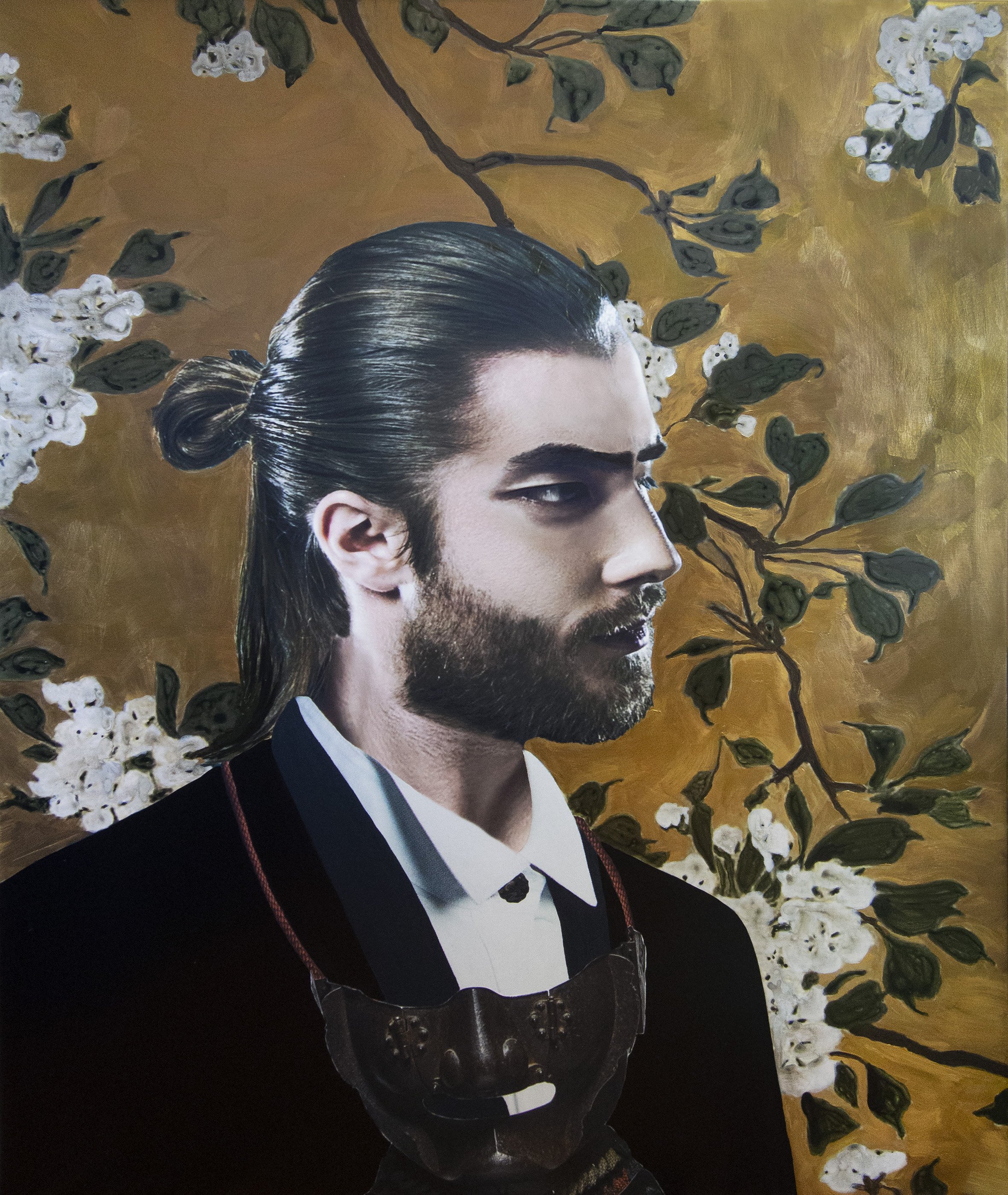
Photography and acrylic on canvas
| 124 x 155cm | (framed)
Lowering his mask this unnamed Samurai reveals his face. Called Men-Yoroi or Menpo these masks were facial armour worn by Japanese Samurai.
Menpo not only offered protection but also served to conceal the Samurai’s facial expressions, adding an air of mystery and fear on the battlefield.
These masks were an emblematic symbol of the Samurai’s resilience, skill and unwavering commitment to their code of honour, Bushido.

Photography and acrylic on canvas
| 124 x 155cm | (framed) SOLD
Oni Gozen was a Japanese noble woman and an Onna-Bugeisha from the Sengoku period. She was nicknamed ‘Oni’ meaning ogre or demon because of her fierceness and bravery. She was not only a skilful martial artist but a military commander.
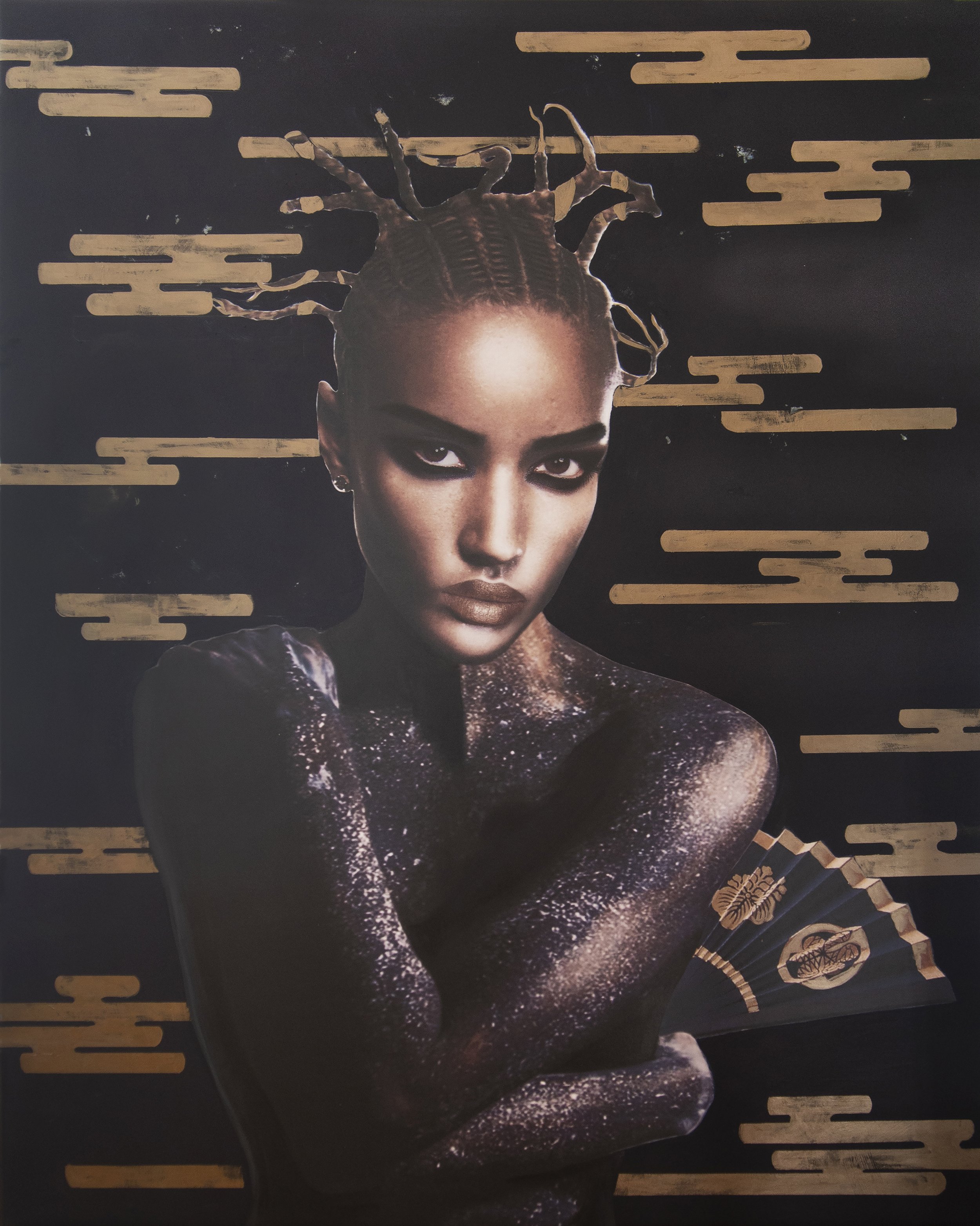
Photography and acrylic on canvas
| 124 x 155cm | (framed) SOLD
Titled Midnight Kunoichi, the term Kunoichi was given to female ninja who were practitioners of ninjutsu and were highly trained with a variety of weapons including cat-claws and metal blade folding fans.

Photography and acrylic on canvas
| 124 x 155cm | (framed) $5000
Mochizuki Chiyome was a 16th century noble woman and poet however she made her mark in history as being responsible for creating an all-female group of ninja known as the Kunoichi.
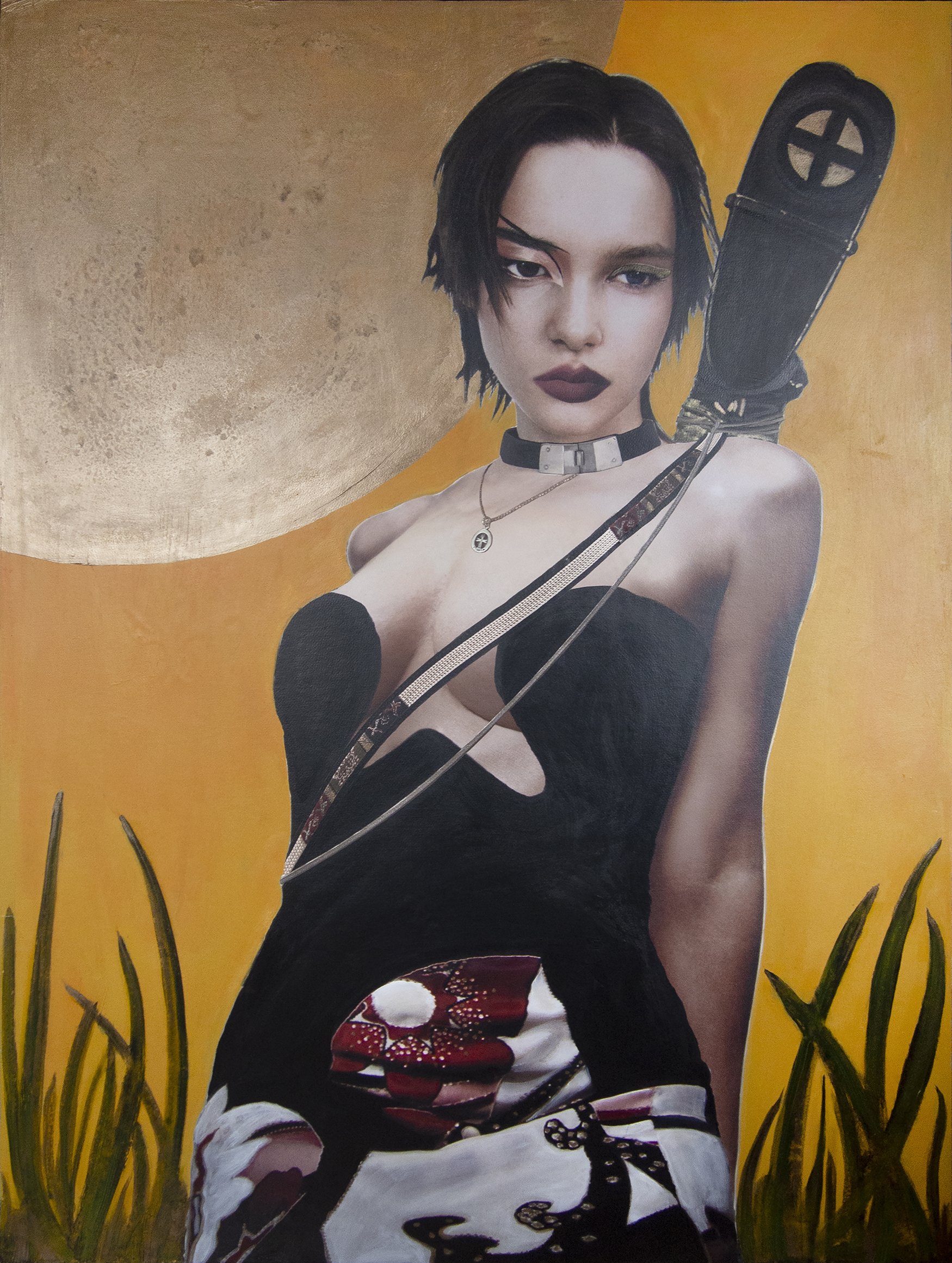
Photography and mixed media on European poplar
| 122 x 166cm | (framed) SOLD
Titled female Samurai from the Shimazu clan I have depicted this unnamed Onna-Musha as a modern day unassuming warrior.
The Onna-Musha lived within warring cultures in pre-modern Japan. These women engaged in battle alongside samurai men and acquired indispensable skills in martial arts, archery and horse riding. They not only defended the household and family during times of war but took part in offensive battles. They were considered members of the Bushi Samurai class and were just as courageous and capable as their male counterparts.

Photography and mixed media on European poplar
| 115 x 150 cm | SOLD
Empress Jingu a Japanese woman warrior who lead an army in the year 201. She was an extremely skilful Onna Bugeisha (female Samurai) This portrayal of her is my interpretation of how she would look if she existed in today’s world. Fierce, beautiful, confident, compassionate and so very comfortable in her on skin.
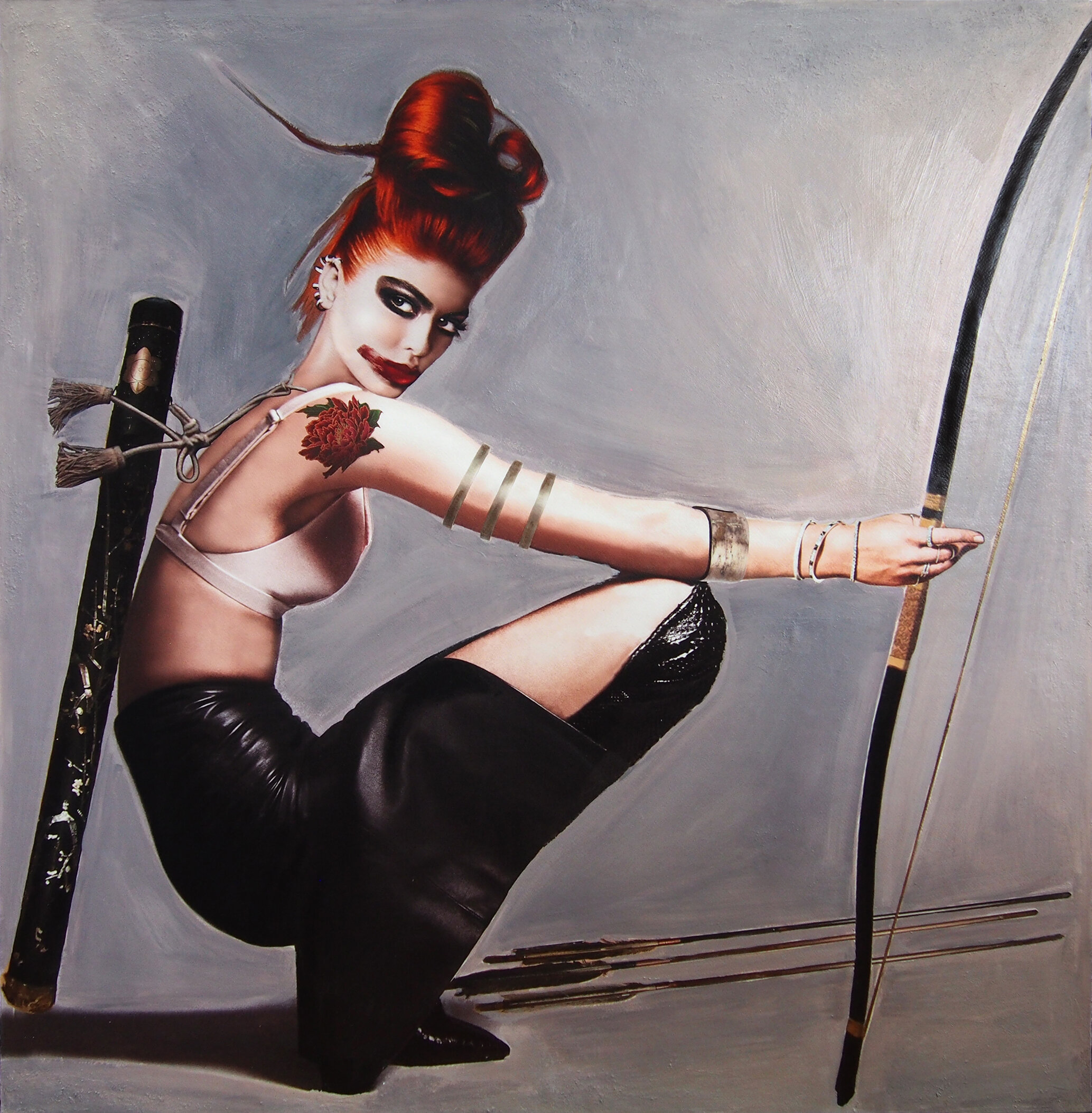
Photography and mixed media on European poplar (framed)
| 122 x 125cm | SOLD
Proficient in Kyudo (The Way of the Bow) Madame Kyudoka's skills originated with the Samurai class of feudal Japan. That split moment before she was to shoot her arrow Madame Kyudoka was able to combine attitude, movement and technique in harmony. This was the essence of her practice as was her ability to skilfully switch from battlefield archery to a spiritually, meditative technique and to play.
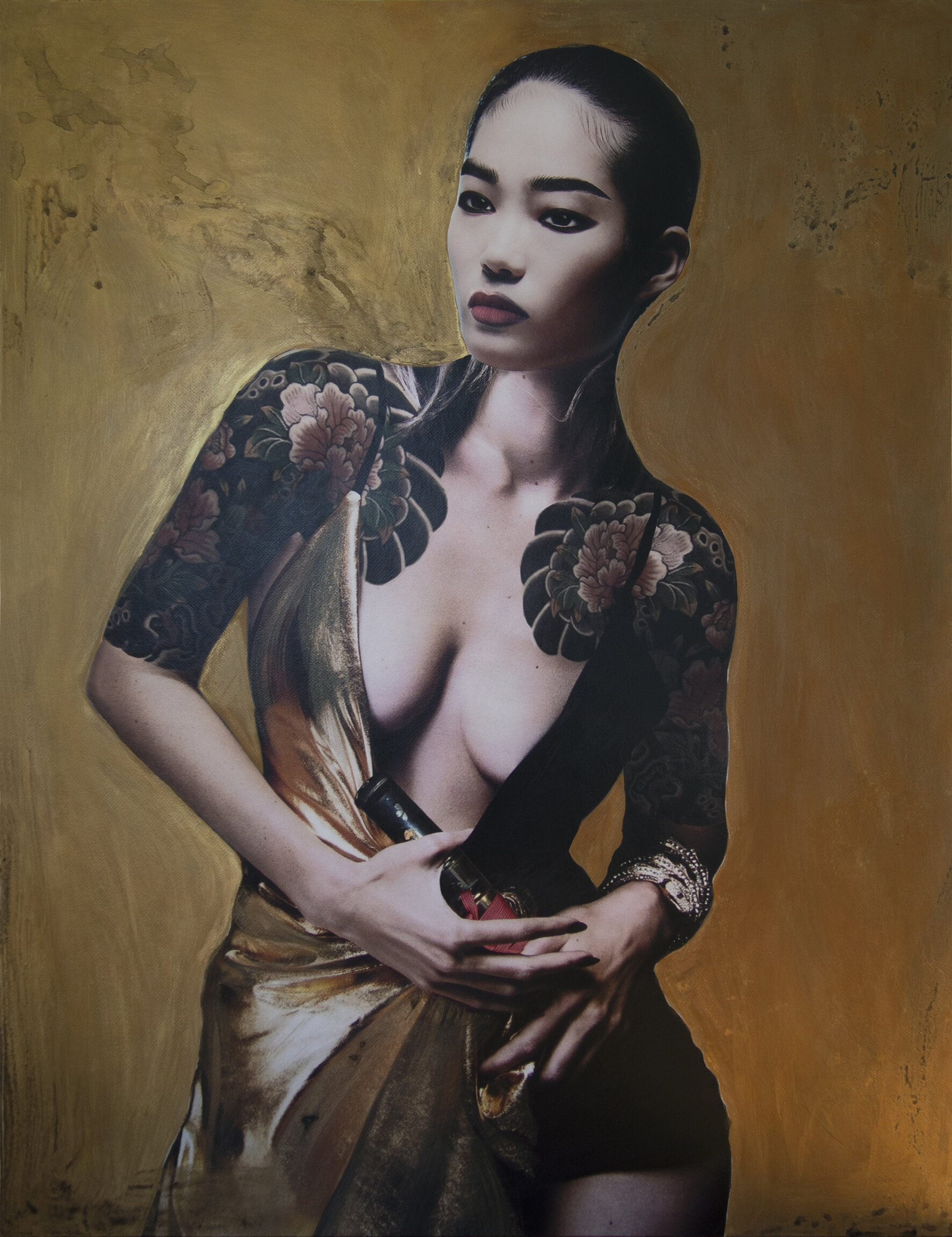
Photography and mixed media on European poplar (framed)
| 115 x 150cm | SOLD
The story of Tomoe Gozen is shrouded in mystery, but she was known for being both beautiful and a mighty warrior in Japan during the 12th century. What’s truly impressive about the legend of Tomoe Gozen is not just that she was a female samurai (Onna-bugeisha who were Japanese women trained to protect their homes and families from invading forces), but that she was an elite warrior - an Onna-musha - who fought in offensive battles rather than just defensive.
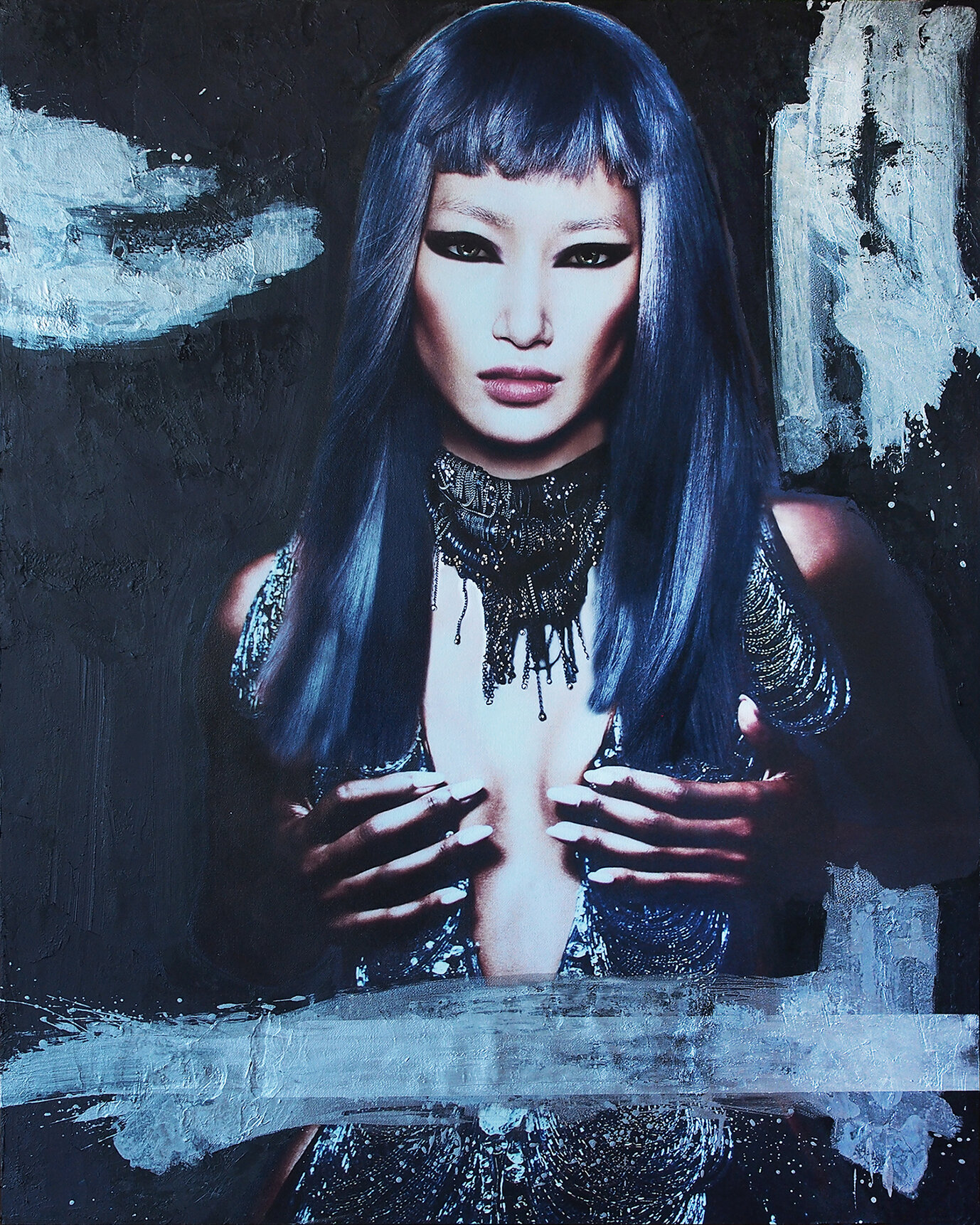
Photography and mixed media on canvas | 122 x 153 cm | SOLD
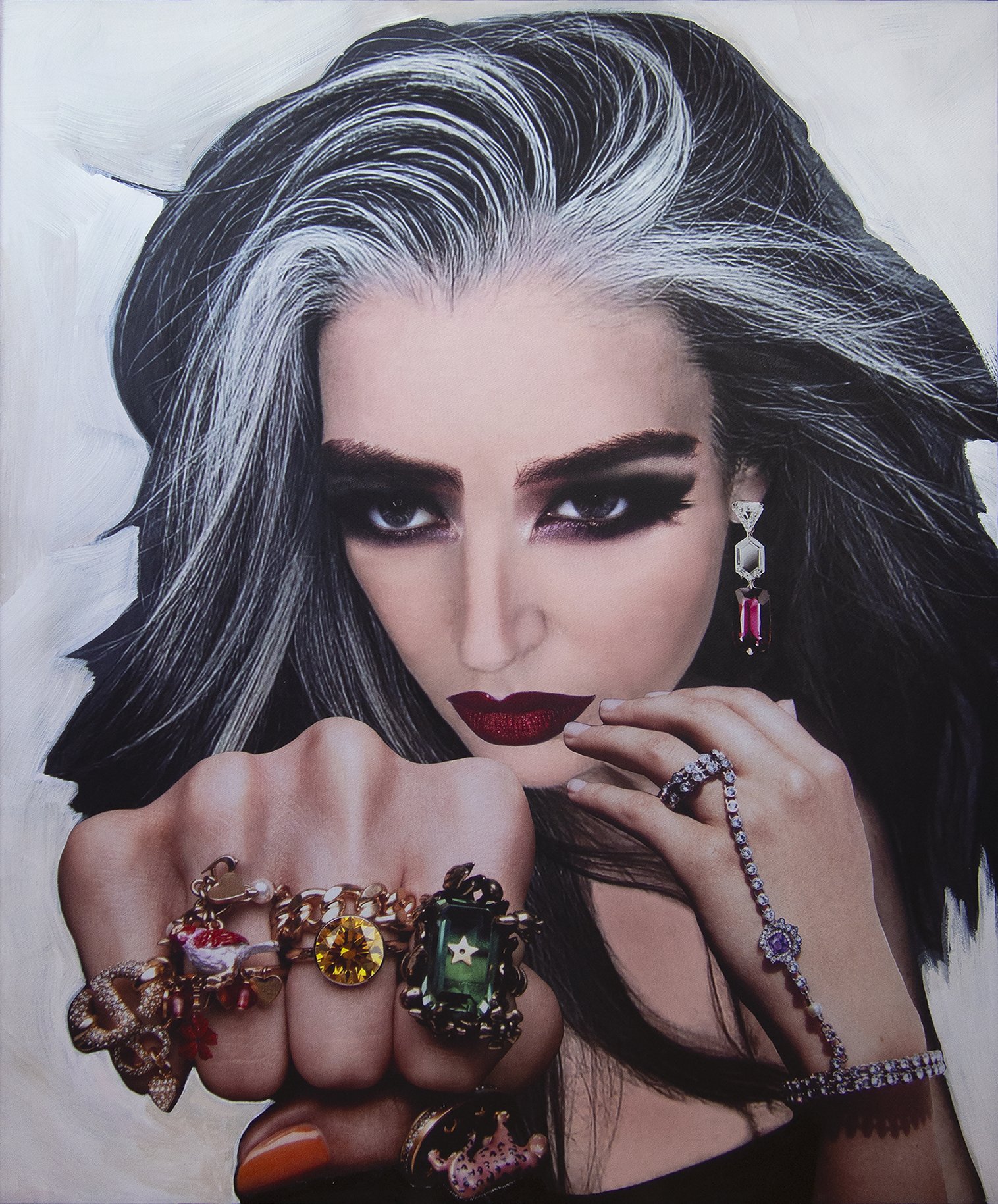
Photography and mixed media on European poplar (framed)
| 105 x 125cm | SOLD
Mrs Jones is you and me, powerful, beautiful, brilliant and free. A woman with a mindset steadfast and strong, Mrs Jones certainly has her ‘own thing goin’ on!’















Photography and acrylic on canvas
I 125 x 155cm I (framed)
$5000
In 1579, an African man now known by the name of Yasuke arrived in Japan. He served the daimyo Oda Nobunaga during the Sengoku period and was the first known foreigner to achieve Samurai status.
Photography and acrylic on canvas
I 125 x 155cm I (framed)
$5000
Xun Guan (303–?) was an ancient Chinese female warrior that lived during the Jin dynasty and who famously led a group of soldiers into battle at the age of thirteen. As daughter of the governor of Xiangyang and a highly skilled martial artist, Xun is said to have broken through enemy lines to assemble reinforcements and prevent the city of Xiangyang from being invaded.
Photography and acrylic on canvas
I 125 x 155cm I (framed)
$5000
In ancient Japan, a Kensei was an honorary title given to a warrior of legendary skills in swordsmanship. The literal translation of kensei is "sword saint". The term is considered by some to imply a higher degree of perfection and possibly also encompass a higher moral dimension.
Photography and acrylic on canvas
I 125 x 155cm I (framed)
Taught by her father, a Shaolin master, Fang Chi Liang was devastated by his death when he was attacked and swore revenge. She realised, however, that her Kung Fu skills were not up to the task given her small stature. While pondering this problem, it is said that she was disturbed by a large crane that screeched and landed close to her. Fang tried to beat it away using a long pole, but the crane fended off her attacks easily by using its agility .
Amazed by the crane's grace and relaxed speed, Fang began to formulate a Kung Fu style known as White Crane based on its use of evasion and counter attack. After intense training Fang Chi Liang was able to avenge her father's death.
Photography and acrylic on canvas
| 124 x 155cm | (framed) SOLD
Kaihime or Lady Kai was a Japanese Onna-musha from the Sengoku period. She is known as the beautiful and heroic woman who helped her father’s resistance at the Oshi castle.
Photography and acrylic on canvas
| 124 x 155cm | (framed)
Lowering his mask this unnamed Samurai reveals his face. Called Men-Yoroi or Menpo these masks were facial armour worn by Japanese Samurai.
Menpo not only offered protection but also served to conceal the Samurai’s facial expressions, adding an air of mystery and fear on the battlefield.
These masks were an emblematic symbol of the Samurai’s resilience, skill and unwavering commitment to their code of honour, Bushido.
Photography and acrylic on canvas
| 124 x 155cm | (framed) SOLD
Oni Gozen was a Japanese noble woman and an Onna-Bugeisha from the Sengoku period. She was nicknamed ‘Oni’ meaning ogre or demon because of her fierceness and bravery. She was not only a skilful martial artist but a military commander.
Photography and acrylic on canvas
| 124 x 155cm | (framed) SOLD
Titled Midnight Kunoichi, the term Kunoichi was given to female ninja who were practitioners of ninjutsu and were highly trained with a variety of weapons including cat-claws and metal blade folding fans.
Photography and acrylic on canvas
| 124 x 155cm | (framed) $5000
Mochizuki Chiyome was a 16th century noble woman and poet however she made her mark in history as being responsible for creating an all-female group of ninja known as the Kunoichi.
Photography and mixed media on European poplar
| 122 x 166cm | (framed) SOLD
Titled female Samurai from the Shimazu clan I have depicted this unnamed Onna-Musha as a modern day unassuming warrior.
The Onna-Musha lived within warring cultures in pre-modern Japan. These women engaged in battle alongside samurai men and acquired indispensable skills in martial arts, archery and horse riding. They not only defended the household and family during times of war but took part in offensive battles. They were considered members of the Bushi Samurai class and were just as courageous and capable as their male counterparts.
Photography and mixed media on European poplar
| 115 x 150 cm | SOLD
Empress Jingu a Japanese woman warrior who lead an army in the year 201. She was an extremely skilful Onna Bugeisha (female Samurai) This portrayal of her is my interpretation of how she would look if she existed in today’s world. Fierce, beautiful, confident, compassionate and so very comfortable in her on skin.
Photography and mixed media on European poplar (framed)
| 122 x 125cm | SOLD
Proficient in Kyudo (The Way of the Bow) Madame Kyudoka's skills originated with the Samurai class of feudal Japan. That split moment before she was to shoot her arrow Madame Kyudoka was able to combine attitude, movement and technique in harmony. This was the essence of her practice as was her ability to skilfully switch from battlefield archery to a spiritually, meditative technique and to play.
Photography and mixed media on European poplar (framed)
| 115 x 150cm | SOLD
The story of Tomoe Gozen is shrouded in mystery, but she was known for being both beautiful and a mighty warrior in Japan during the 12th century. What’s truly impressive about the legend of Tomoe Gozen is not just that she was a female samurai (Onna-bugeisha who were Japanese women trained to protect their homes and families from invading forces), but that she was an elite warrior - an Onna-musha - who fought in offensive battles rather than just defensive.
Photography and mixed media on canvas | 122 x 153 cm | SOLD
Photography and mixed media on European poplar (framed)
| 105 x 125cm | SOLD
Mrs Jones is you and me, powerful, beautiful, brilliant and free. A woman with a mindset steadfast and strong, Mrs Jones certainly has her ‘own thing goin’ on!’